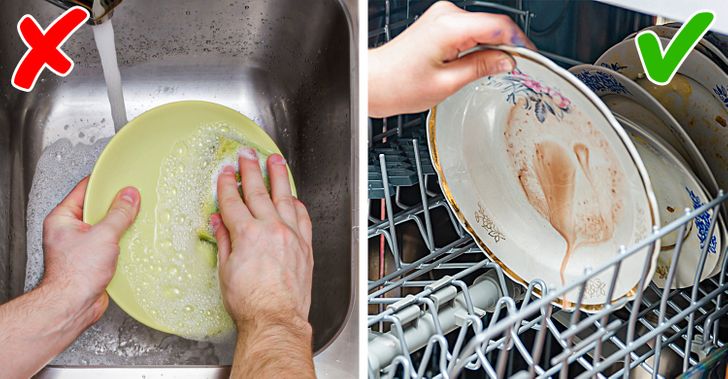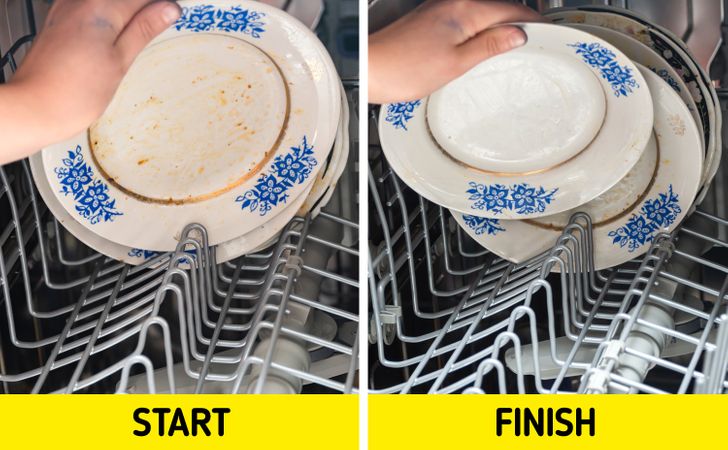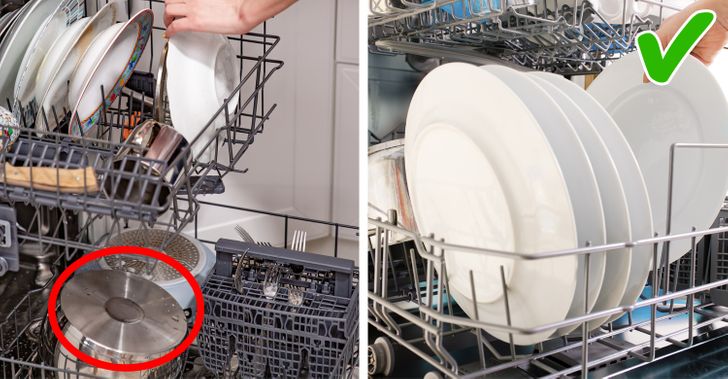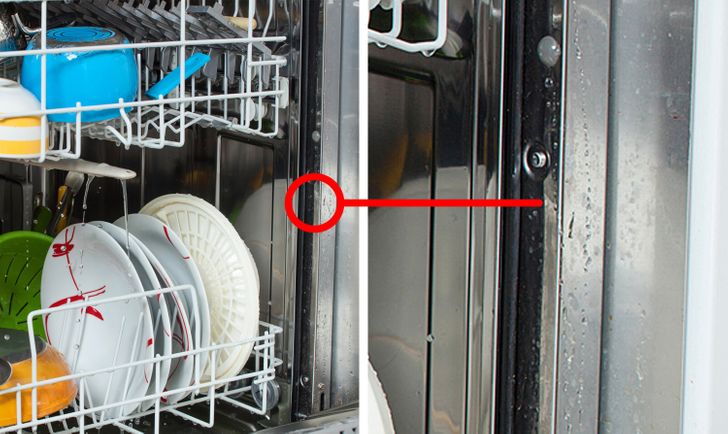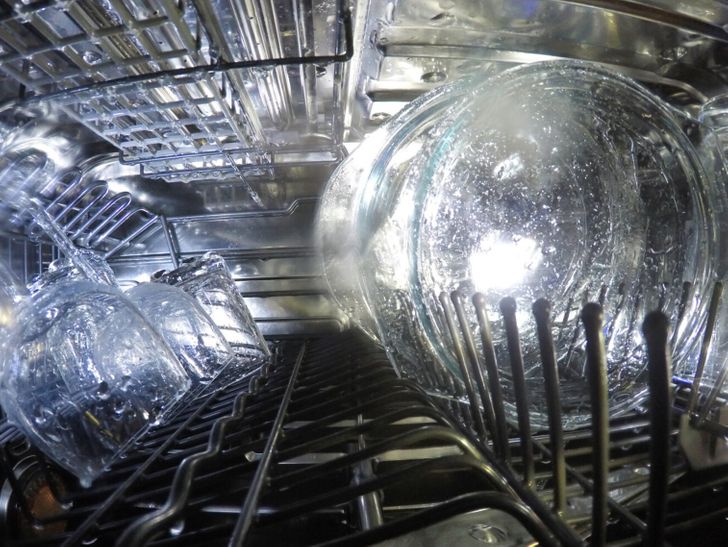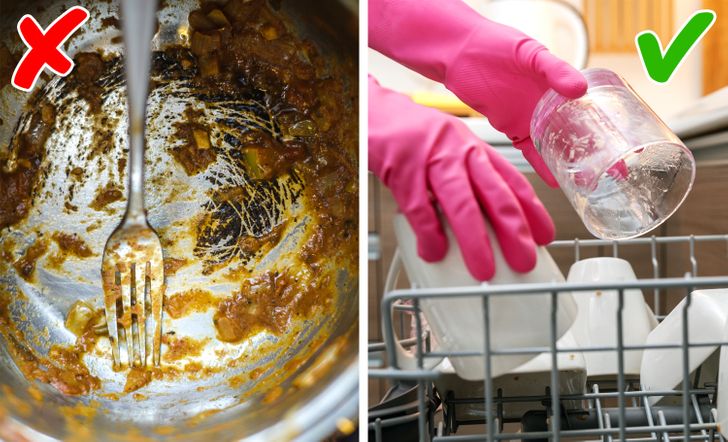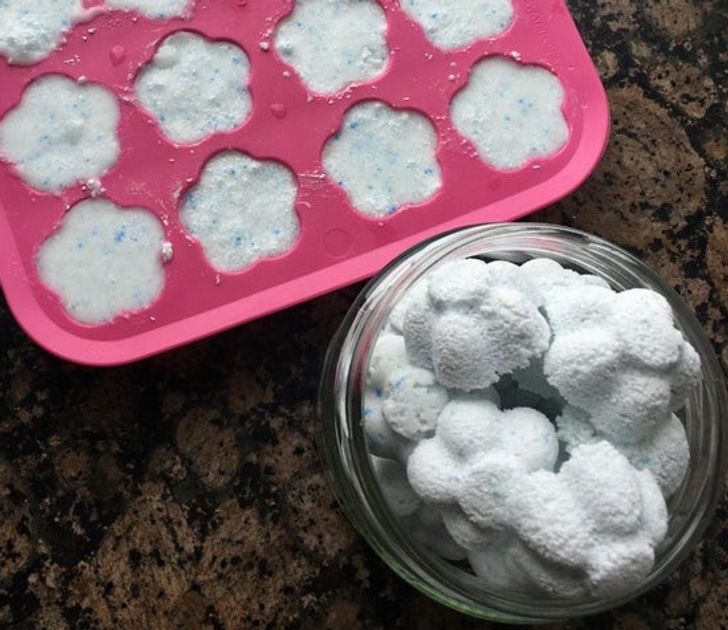hah well I guess it's good to know... too bad my work stopped because of pandemic
7 Ways That We Are Using Our Dishwashers Wrong, According to the Experts
Rinsing our dishes is a thing of the past. Yes, it can actually be better to put our dirty dishes directly into the machine, saving us time and money. Not only are some of our dishwashing habits outdated but they can also be pretty wrong, like how we fill our machines, our cleaning routines, and our water temperature levels.
Bright Side is sharing the most common errors with you and letting you know how you can change them today, with the added bonus of a dishwasher pod recipe.
1. Pre-washing the dishes
Pre-rinsing your dishes may not be the most effective way to clean them, especially if you have purchased a dishwasher in the last 5 years. They now come with a soil sensor, meaning that if it decides your dishes aren’t very dirty, it will use a shorter cycle.
It also consumes much more water and electricity. In fact, a study says rinsing and washing our dishes can waste as much as 8-27 gallons of water.
2. The water heater is below 120ºF
Dishwashers that are only connected to a hot water pipe may not clean properly. The low water temperature entering the dishwasher can be a problem if you don’t have a built-in heat booster. To ensure that everything will be squeaky clean, make sure your water is getting hot enough.
3. Not running hot water from our taps
This can help your dishwasher run more efficiently by drawing hot water directly from the pipes for the first cycle. Something especially useful in the winter with cold pipes, for instance.
The average dishwasher takes around 2 minutes to heat the water by 1 degree and most cycles need to be at 135ºF. If the water is only at 105ºF then your wash will take an extra 60 minutes!
4. Accidently blocking the sprayer
When we place large items across most of the rack they prevent the items above from getting cleaned properly. Instead, it can be better to wash the larger items by hand to make sure that your dishes are hygienically cleaned.
5. Not cleaning the rubber seals
The rubber collects bacteria over time from the dirty items in the dishwasher, which love humid spots. This can be tackled with an old toothbrush and soapy water every few months to prevent buildup.
6. Not using a rinse aid
If your load is coming out wet and with water spots, then a rinse aid could be the answer. It will reduce the surface tension of the water and stop droplets from forming and leaving stains. It also helps the items to dry quickly, so you are not left with a ton of drying to do.
7. Mixing soil levels
Some items may require a longer deeper clean, and others a shorter cycle. Similarly to laundry, group your dirty dishes according to their soil level for the best results! This may mean having to hand wash some items to prevent ruining the load.
Bonus: dishwasher pod recipe
For this recipe all that you need to do is:
- Mix dishwasher powder with water and vinegar until it forms a thick paste.
- Leave it overnight to set in a mold and store it in an airtight container.
This also means that you can control the amount of soap you add to the wash, preventing any unnecessary slimy residue.
How do you wash your dishes? Please share your dishwasher tips with us!
Comments
oh what happened to it? Why did it stop working?
Well it was in a bar and those are not essential so government closed them
I had no idea about numbe 4, I actually always put it wrong ... oops!
Related Reads
12+ Harrowing Revelations That Are As Eerie As It Gets

My Sister Has Been Tormenting Me All My Life, Today She Received an Epic Payback

14 Strange Requests That Assistants Received at Work

After My Surgery, My Sister-in-Law Shut Me Out of the Family

I Refused to Let a Family Tragedy Ruin My Wedding Day

I Left My Birthday Party After My Partner Humiliated Me in Front of Everyone

12 Stories That Prove Grandparents Are the Heart and Soul of Family

15 Stories About First Love That Had an Unexpected Twist Years Later

16 Strangers Who Walked Into Someone’s Day and Made It Anything but Ordinary

My Mom Is Dying and My Pregnant Wife Posed Me a Very Hard Question

My MIL Sent Me a Christmas Tree With a Secret I Won't Forget

12 Men Caught in the Most Disturbing Love Traps

